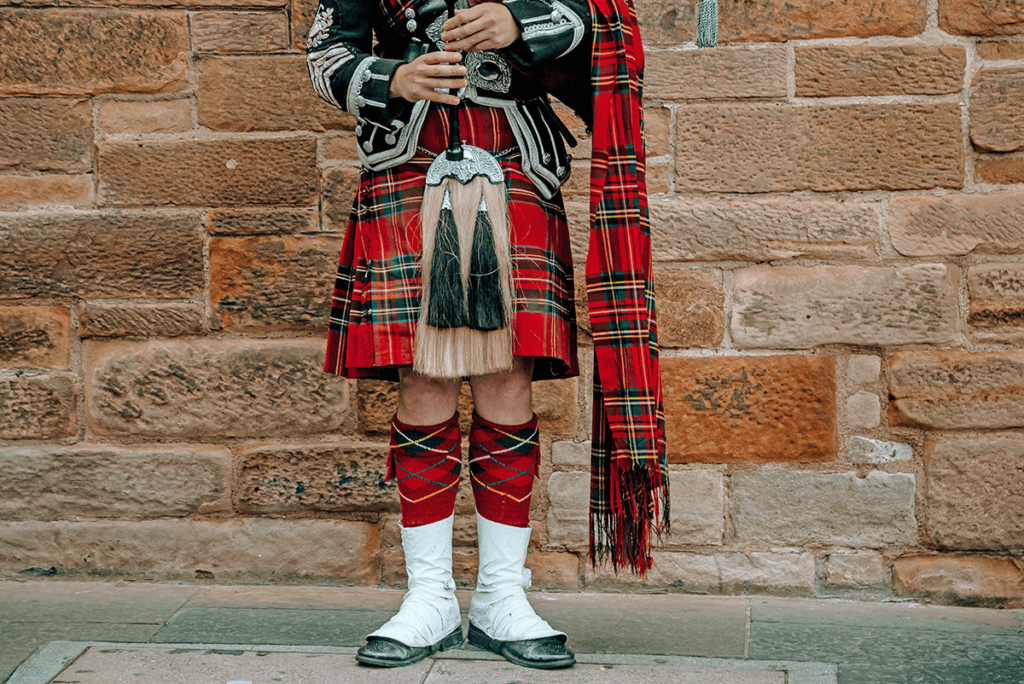As visitors arrive in Scotland, they can’t help being captivated by the rich tapestry of history woven into the fabric of our magical country. Among the many cultural symbols that stand proudly as a testament to our heritage, the kilt holds a special place, symbolising tradition, pride, and a sense of identity that spans centuries.

The history of the kilt is as diverse and fascinating as the landscapes that shape the Scottish terrain. Originating in the Highlands, the kilt’s roots can be traced back to the 16th century.
Initially, a practical garment designed for the rugged, outdoor lifestyle of the Scottish clans to provide freedom of movement in the challenging terrain. The “feileadh mor,” or great kilt, was a large piece of tartan fabric that could be draped over the shoulder and belted around the wearers waist. It served as both clothing and a versatile piece of fabric for protection against the elements.
In the 18th century, the kilt underwent a transformation with the introduction of the tailored version we all know today. This shift was largely influenced by social and military changes, as the British government sought to bring order to the Highlands after the Jacobite uprisings. The kilt became a symbol of Scottish identity and military prowess, adopted by Highland regiments serving in the British Army.
The patterns and colours of tartans are deeply tied to familial clans, each with its unique design. Tartans, with their intricate combinations of colours, represent a visual language that communicates familial ties, allegiance, and a connection to the Scottish landscape.
Today, many visitors are enthralled by the chance to explore their own Scottish roots through the vast array of available tartans.
For tourists venturing into Scotland, donning a kilt is not just a sartorial choice; it’s an invitation to step into the pages of Scotland’s storied past. Traditional Scottish events, such as Highland games and ceilidh dances, provide the perfect backdrop for showcasing the elegance and timelessness of the kilt.
Whether worn by locals or visitors alike, the kilt remains a symbol of Scotland’s enduring spirit, welcoming all to participate in the living history of this proud and majestic land.
Have your say - Leave a comment below: